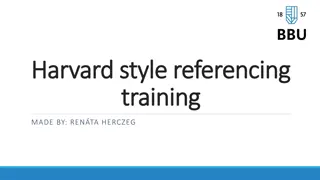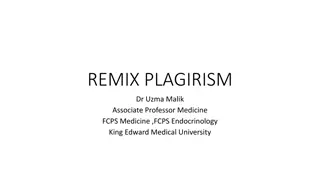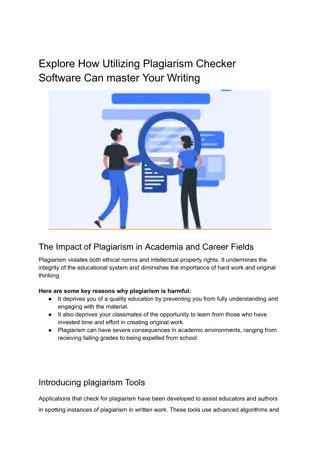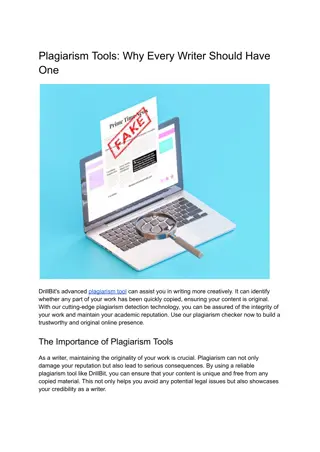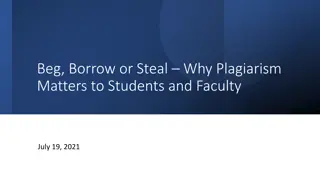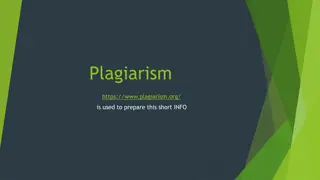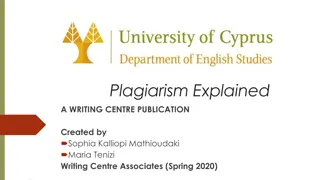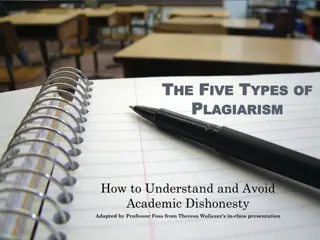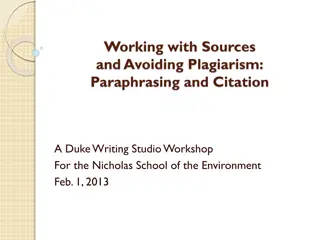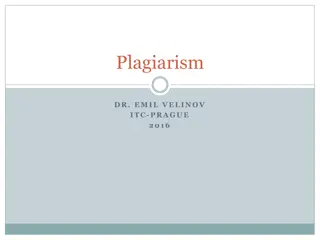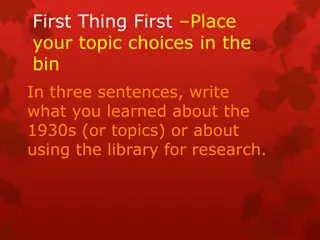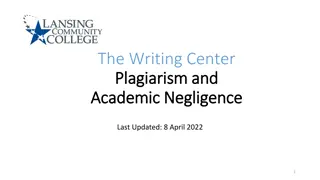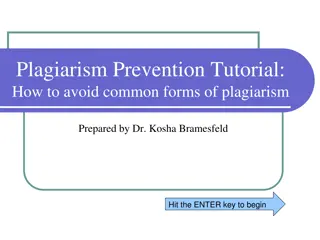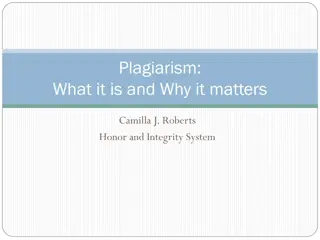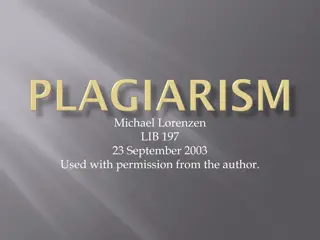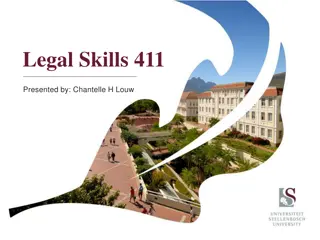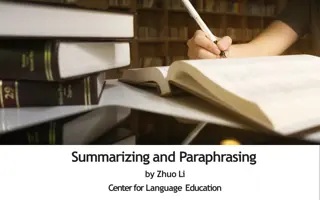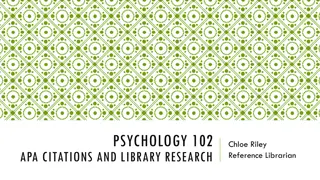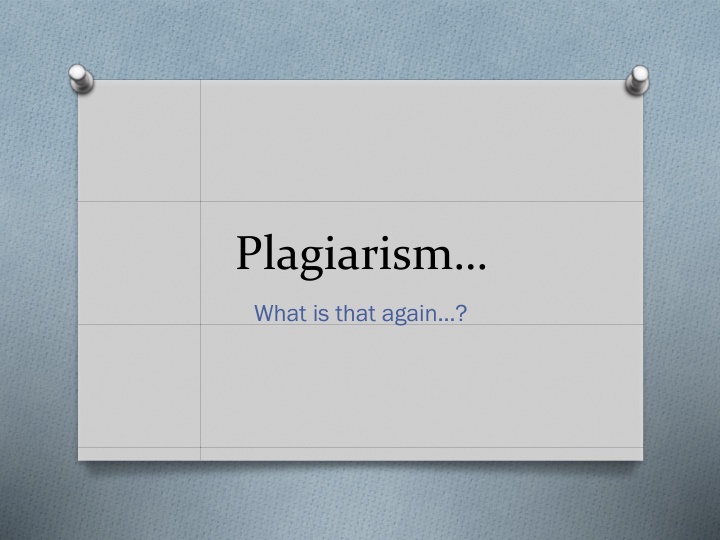
Understand and Avoid Plagiarism: Essential Guide
Plagiarism is defined as using someone else's words or ideas without giving credit. This guide covers what plagiarism is, how to avoid it through proper quoting and paraphrasing, reasons why students plagiarize, and tips for prevention. Understanding plagiarism is crucial for academic integrity.
Download Presentation

Please find below an Image/Link to download the presentation.
The content on the website is provided AS IS for your information and personal use only. It may not be sold, licensed, or shared on other websites without obtaining consent from the author. If you encounter any issues during the download, it is possible that the publisher has removed the file from their server.
You are allowed to download the files provided on this website for personal or commercial use, subject to the condition that they are used lawfully. All files are the property of their respective owners.
The content on the website is provided AS IS for your information and personal use only. It may not be sold, licensed, or shared on other websites without obtaining consent from the author.
E N D
Presentation Transcript
Plagiarism What is that again ?
Agenda O What is plagiarism O How to avoid plagiarism O Why students plagiarize O How faculty detect plagiarized papers
What is plagiarism O Plagiarism is defined as appropriating someone else s words or ideas without acknowledgment. O There are two types of plagiarism O Direct Quotes O Paraphrasing
What are direct quotes O Direct quotes are when you use someone else s writing word for word. Say! I like green eggs and ham! I do! I like them, Sam-I-am! And I would eat them in a boat. And I would eat them with a goat O Quotations can spice up a paper, tie your thoughts to a text, and provide concrete examples of what you are talking about. O If you use direct quotes without putting them in quotes, you have blatantly plagiarized. Even if you add the source in you bibliography, it is still plagiarism. Seuss, Dr. Green Eggs and Ham. Party ed. New York: Beginner Books, 1988. 59. Print.
What is paraphrasing O Paraphrasing involves putting a passage from a source material into your own words. A paraphrase must also be attributed to the original source. If your sentences use many of the same words and grammatical structure as the original source, it could be considered as plagiarism.
How to avoid plagiarism O Always put quotes from source material in quotations. Never forget to do this; this is the easiest way to get accused of plagiarism. O When paraphrasing be sure to use your own words as much as possible; don t just rearrange or replace a few words. Be sure to give credit to the original source. O HINT: When in doubt cite!
Why do students plagiarize O One of the most common reason students plagiarize is because they feel overwhelmed. Students also engage in plagiarism for a number of other reason as well; including fear of asking for help with assignments, difficultly finding and analyzing research materials, belief that unfair or unsympathetic treatment from a professor justifies cheating, or they get trapped into searching for the one right answer . O Some students inadvertently plagiarize from online sources, because they do not understand all the rules for properly using and citing sources. O HINT: Ask for help!
How faculty detect plagiarized papers O Faculty will look at the writing style, language, vocabulary tone, grammar, etc. to see if it s different then what is normally expected from the student. O Faculty will also notice is the writing style, tone, language, etc. is different from other parts of the paper. O The use of commercial vendors will allow faculty to scan papers against know cheat sites and internet sources for a fee, such as Turnitin.

